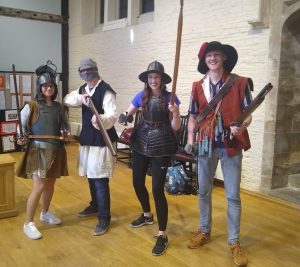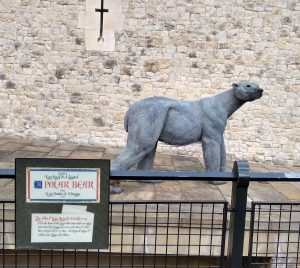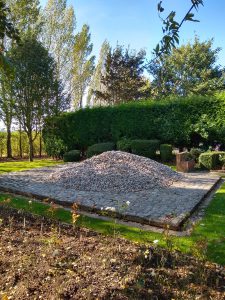
March 17, 2020, by Rupert Knight
From caveman to concepts: Making history count in the primary classroom
In this blog, Victoria Crooks considers six ideas for developing primary history, along with some practical strategies.
“Mum you’ll never guess what happened today!” These words we’re delivered by my 7-year-old with a frisson of excitement. That morning he had arrived at school to find his classroom in near darkness. The walls and windows had been covered in grey packing paper. The classroom had become a cave in which they began to explore the life of ‘Stone Age man’, decorating the walls with their own prehistoric cave art. This was his first experience of history in Key Stage 2, and it left him excited and eager to learn more about the ‘changes in Britain from the Stone Age to the Iron Age’ (KS2 NC 2014).
My 7-year-old is inquisitive and eager to learn. He is ripe for inspiring and laying foundations of historical schema and disciplinary thinking which will allow him to develop an understanding of the past and a passion for history. But he is also easily distracted by Star Wars and Lego. When I was asked by the primary ITE team if I would offer some thoughts about the ways primary colleagues and beginning teachers might seek to approach the Key Stage 1 and 2 history curriculum, it seemed an important step in my quest to get my own children excited about the subject I love!
I am frequently in awe of my primary colleagues; the breadth and scope of the task they face in the classroom each day seems overwhelming to someone viewing that world from the outside. High pressure accountability and the demand to place literacy and numeracy above all else in the curriculum creates undoubted pressures on primary teachers. I wonder that they find the space to even attempt developing these little people into empathetic and well-rounded characters who have a thirst for learning, an appreciation of a wide range of subjects and fundamental life skills. Add to this the fact that we know the early years matter most in terms of ‘closing the gap’, and that primary teachers operate outside of their subject specialisms each and every day, the demands placed upon them are significant and should not be underestimated by secondary subject specialists.

So, amid this challenge, what would I hope my primary colleagues might help our children to understand about the discipline of history:
1. To study history is to enquire about the past
At the heart of rigorous historical study is the historical enquiry question. These questions provide coherence and a sense of real historical purpose to a sequence of lessons. Enquiry questions use a central historical idea, often based in the substantive or disciplinary concepts of history, to ‘capture the interest and imagination… place an aspect of historical thinking, concept or process at the forefront of the pupils’ minds [and]result in a tangible, lively, substantial, enjoyable ‘outcome activity’ (i.e. at the end of the lesson sequence) through which pupils can genuinely answer the enquiry question’ (Riley, 2000). A question like ‘How do we know the Vikings built their longships?’ creates an opportunity to engage in evidential enquiry, considering how historians use evidence (including archaeological evidence) to construct the past, whilst also answering some important ‘knowledge’ questions along the way (for example, ‘What were Viking longships used for?’). In using enquiry questions to develop historical understanding, students can enquire, search for and examine historical evidence and thus also understand that…
2. The past is not a fixed entity, that it not just about finding out the facts to know what happened.
Historians describe the past and offer explanations of it, and in doing so they create an interpretation of this past. Having a secure grasp of the substantive knowledge (‘the facts’) is vital to historical study but it needs to be blended with an understanding of the discipline of history. If children are given opportunities to explore why different interpretations of the same event can coexist early on in their historical learning, they are well equipped to develop an understanding of the nature of the discipline and the reason for studying events that are already ‘known’. It also equips them with a sense of purpose in their own historical enquiries – in their own small ways they can participate in history-making too.
3. All historical sources are useful for something and should not be dismissed out of hand
Whether a source of evidence being used in an enquiry is ‘primary’ (contemporary to the event) or ‘secondary’ (most commonly an historical interpretation formed after the event using primary evidence) does not necessarily affect how useful it is for revealing something about the past. Students often arrive at secondary school stating that secondary source evidence is not useful or that you can’t trust it. Utility is dependent upon the nature of the enquiry – if it helps to answer the question, then it is useful. Reliability is complex, but just because something is inherently ‘biased’ does not make it irrelevant, rather it illuminates something about the ways in which the historical event or person has been viewed. The way in which pupils go on to misuse the term ‘bias’ during their future historical learning means it is worth avoiding the term altogether, instead focusing on how useful it is because it gives a certain point of view. Introducing pupils to engage with evidential understanding can be encouraged by bringing artefacts into the classroom (even in EYFS) – local museums are often invaluable in providing loan boxes of artefacts relevant to your topic and locality too.

4. There are big historical ideas (substantive concepts) which develop layered meaning as they are explored in the context of different periods and events
Understanding substantive historical concepts – for example, monarchy, peasant, the church – comes through students encountering the concept in different contexts through their historical study. ‘The Church’ means quite different things in the context of medieval society and political power compared with the ‘The Church’ in the Tudor period after the reformation, and has very different connotations when used in a C21st context. KS2 (and even KS1) history provides many opportunities to begin the layering of this conceptual understanding – Fordham has collated a list of the substantive concepts which could be first introduced through primary history.

5. Talking about the past requires precise and specific chronological language
The language we encourage students to use to describe specific moments in time matters. When the past is lumped into one homogenous mass under phrases such as ‘back in the day’ or ‘in the olden times’, this creates a barrier to their chronological understanding. Encouraging even young children to describe the past precisely by referring to the period or the century or date of the event they are discussing equips them with both the language to explain their thinking and helps to strengthen the framework into which they place their historical understanding, giving shape to the passage of time. Ian Dawson discusses issues of chronology in accessible detail on his website ‘Thinking History’ – this site a treasure trove of rigorous historical thinking and practical guidance for teachers of history.
6. Cross-curricular learning is a great mechanism for history but is not a proxy for good historical learning.
Cross-curricular approaches can help children make sense of the past by connecting their understanding of specific historical events into a wider schema of understanding which enriches their sense of period and place. A well-conceived curriculum which make coherent links between the history, geography, religious influences and culture of a place, person or event is to be celebrated. Historical study also provides significant opportunities for developing students’ literacy. The use of historical fiction can, for example, really help to create a sense of period for children. However, in historical terms, historical fiction is another source of evidence and needs to be viewed and interrogated as such. Care also needs to be taken in the selection of fictional texts explicitly linked to historical study. Tying inappropriate books to topics or suggesting they provide an authoritative factual impression of the past can entrench misconceptions which are hard to unpick and correct later on – The Boy in the Striped Pyjamas is a good example of this.

In writing this ‘wish list’, I am both aware that there are many other aspects of teaching and learning history which I could have discussed, and that the list may already seem pretty overwhelming to primary colleagues who are not from a history background themselves. If you want to grapple with these ideas further, I thoroughly recommend joining the Historical Association. The HA provide a wealth of resources and support for history teachers, including primary teachers and subject leaders, as well as publishing ‘Primary History’ journal and being the centre of the national discourse around rigorous history teaching and learning. I have also added a series of links throughout this blog to help you explore some of the points raised.
As a history teacher and a mum though, please can I encourage you? It would be amazing if primary history were able to begin laying important foundations in children’s understanding of history as a discipline, but if the children you teach leave your classroom excited about history, inquisitive about the past and eager to find out more, then you have probably achieved the most important things of all – instilling a love of learning and an openness to pursuing history as a subject at secondary school level.
References
DfE (2013) History Programmes of Study: Key Stages 1 and 2 National Curriculum in England, https://www.gov.uk/government/publications/national-curriculum-in-england-history-programmes-of-study/national-curriculum-in-england-history-programmes-of-study (accessed 17/01/2020)
Randall, H. (2019) The Problem with ‘The Boy in the Striped Pyjamas’, The Holocaust Exhibition and Learning Centre, https://holocaustlearning.org.uk/latest/the-problem-with-the-boy-in-the-striped-pyjamas/ (accessed 17/01/2020)
Dawson, I. (2015), Enquiry: developing puzzling, enjoyable, effective historical investigations, Primary History 70, http://www.thinkinghistory.co.uk/ResourceBase/downloads/PH70Enquiry.pdf (accessed 17/01/2020)
Dawson, I. Developing Chronological Understanding, http://www.thinkinghistory.co.uk/ActivityBase/ChronologicalUnderstanding.html (accessed 17/01/2020)
Riley, M. (2000) Into the Key Stage 3 history garden: choosing and planting your enquiry questions, Teaching History, 99
Fordham, M. (2017) Substantive Concepts at KS2 & KS3, https://clioetcetera.com/2017/11/09/substantive-concepts-at-ks2-ks3/ (accessed 17/01/2020)
Wrenn, A. (2014) Before 1066 & All That: Transition Between KS2 & KS3, https://www.history.org.uk/primary/categories/315/module/7814/before-1066-all-that-transition-between-ks2-k/7818/d-framing-enquiry-questions-for-a-study-in-dept (accessed 17/01/2020)

My love of history was helped by reading historical fiction as a child. I would love to find books that help children understand what life was like at certain periods of history but without adding to misconceptions. Trying to research this is difficult because generally they are rated on readability rather than accuracy. I would welcome some suggestions!
I would love to know this too – also with regards to TV and historical dramas! I think these visual resources helped my love of theatre and art / design too because period settings are so evocative and with rich costumes etc.